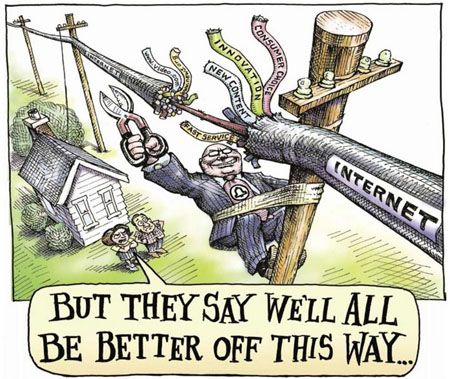 Yesterday, the Supreme Court struck down key components of the FCC’s Open Internet Rules, effectively ending Net Neutrality. So why did this not make the news? Why are online education providers not screaming? Maybe most people just don’t care, or don’t know what it means, but they sure should.
Yesterday, the Supreme Court struck down key components of the FCC’s Open Internet Rules, effectively ending Net Neutrality. So why did this not make the news? Why are online education providers not screaming? Maybe most people just don’t care, or don’t know what it means, but they sure should.
In the most simplistic terms, net neutrality means that all Internet traffic should be treated as equal. Sounds fair enough, until you look at the other side of the equation. This greatly benefits bandwidth hogs, like Netflix and YouTube, who are able (and willing) to pay higher fees to consume more Internet bandwidth in a minute than the average Joe uses in a month.
 While Netflix can afford to pay a higher premium to be able to stream endless hours of content at the highest speeds to their subscribers, how can a consortium of community colleges in Kansas afford to deliver hours of online education to thousands of students via the Internet? They simply cannot afford to pay the same rates as the media monoliths, rendering students helpless and frustrated as they move through their online coursework at the speed of Methuselah, relegated to the bottom of the bandwidth.
While Netflix can afford to pay a higher premium to be able to stream endless hours of content at the highest speeds to their subscribers, how can a consortium of community colleges in Kansas afford to deliver hours of online education to thousands of students via the Internet? They simply cannot afford to pay the same rates as the media monoliths, rendering students helpless and frustrated as they move through their online coursework at the speed of Methuselah, relegated to the bottom of the bandwidth.
Adding insult to injury, the flush for-profit education giants, like the University of Phoenix, will be able to buy more bandwidth, leaving the smaller private online institutions in the virtual dust. If your institution has an online presence, you might want to pay close attention to this ruling and the impact it could have on your students.
This is the much anticipated, yet vastly misunderstood Web 3.0. What are your thoughts? Please share below.


Leave a Reply